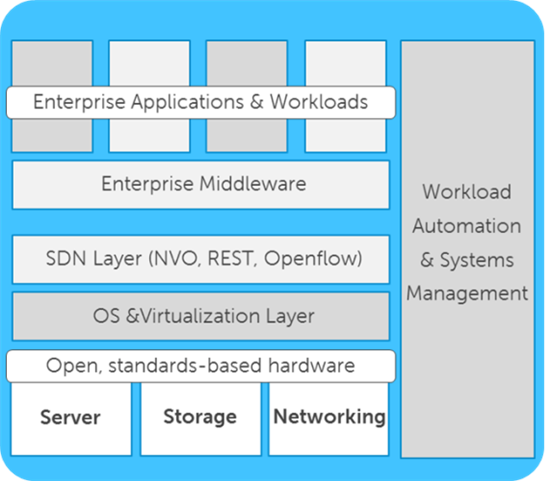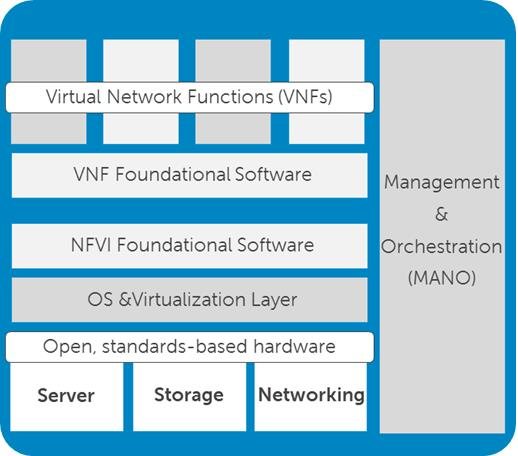In my last blog, I wrote about Open Networking and how it forms the foundation for our Software-Defined Networking (SDN) portfolio at Dell. Open Networking and SDN are playing a significant role in today’s enterprise data centers as customers migrate to Software-Defined Data Center (SDDC) architectures. SDDC employs virtualization technologies to abstract and converge compute, storage and networking resources delivering automated cloud/XaaS functions and services, as shown in figure 1.
Enterprise CIO and IT Managers are making the move to SDDC environments to improve agility and business responsiveness, allowing different application stacks and workloads to be loaded on top as business needs dictate.
Figure 1: Enterprise SDDC stack
However, the adoption of SDDC principles is not limited to enterprise environments. Carriers are also adopting SDDC technologies and architectures as they look to Network Functions Virtualization (NFV) solutions for their provisioned infrastructure and services. In the case of carriers and NFV, the scale of the deployment will vary significantly from small, unstaffed, point-of-presence applications to super-sized hyperscale applications. Also, in the case of carrier NFV deployments there is a preference for OpenStack and open source technologies. Yet despite differences in scale and software, as figure 2 shows, an enterprise SDDC stack and a carrier NFV SDDC stack look remarkably similar.
Figure 2: Carrier SDDC/NFV stack
Interestingly, as the two figures show, both enterprise and carriers are adopting virtualized x86 infrastructure at the core of their software-defined architectures. And while the goals may be different – enterprises are adopting SDDC to improve business responsiveness, carriers are adopting SDDC to improve service agility – there is a significant amount of learning and best-practices that can be shared. This is especially true for large carriers and other organizations that own and operate both enterprise infrastructure, typically governed by the CIO, and provisioned service infrastructure, governed by the CTO. The more that CIO and CTO organizations see the similarities in technology underpinnings, the more they can collaborate, realizing maximum efficiencies in both technology and people. Because in fact, enterprise SDDC and carrier SDDC deployments share common open, server-centric, traits and DNA.
Figure 3: Common traits and DNA for enterprise and carrier SDDC deployments
Interested in learning more about our NFV initiative, visit dell.com/nfv. To stay updated, follow us @DellNetworking on Twitter.


